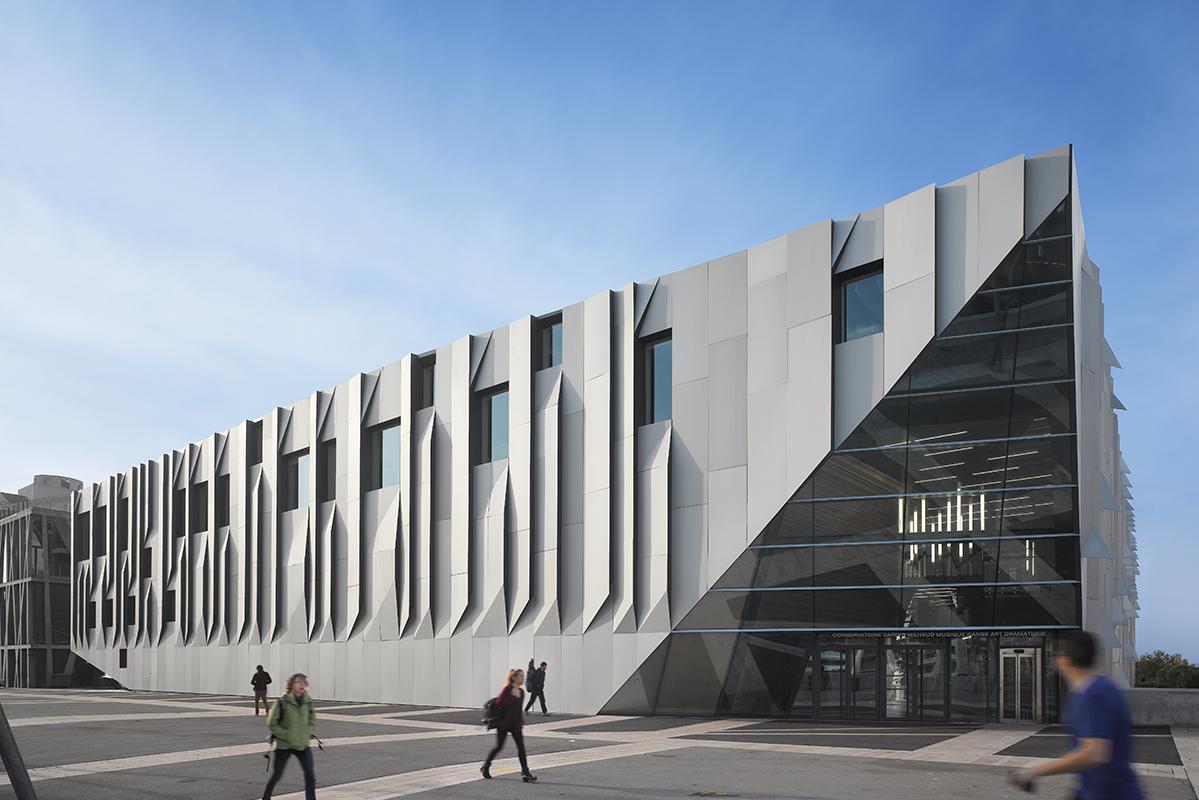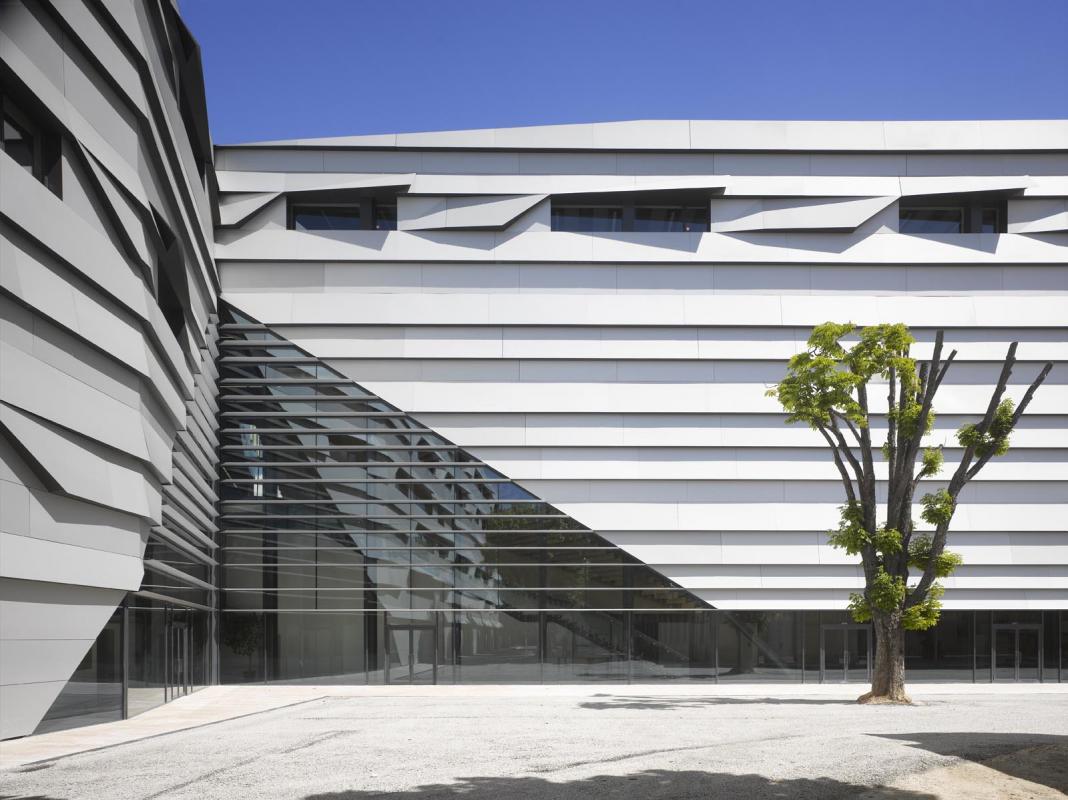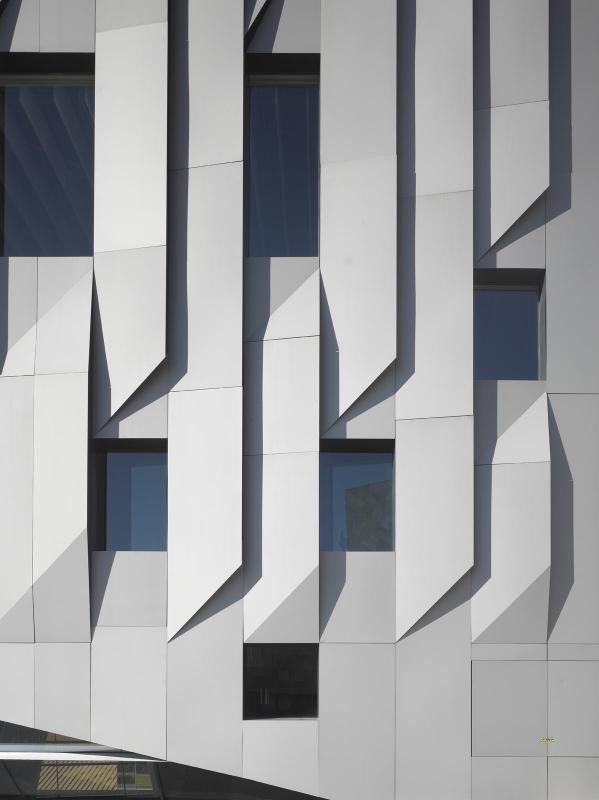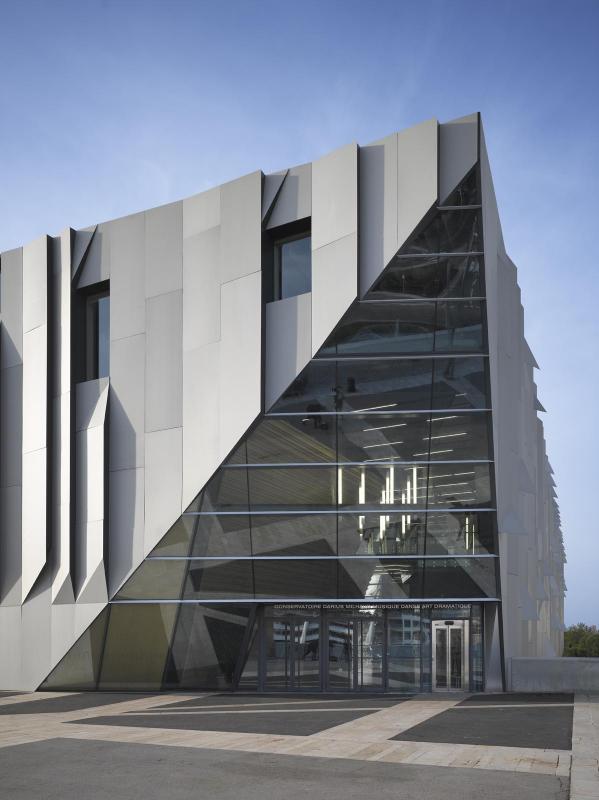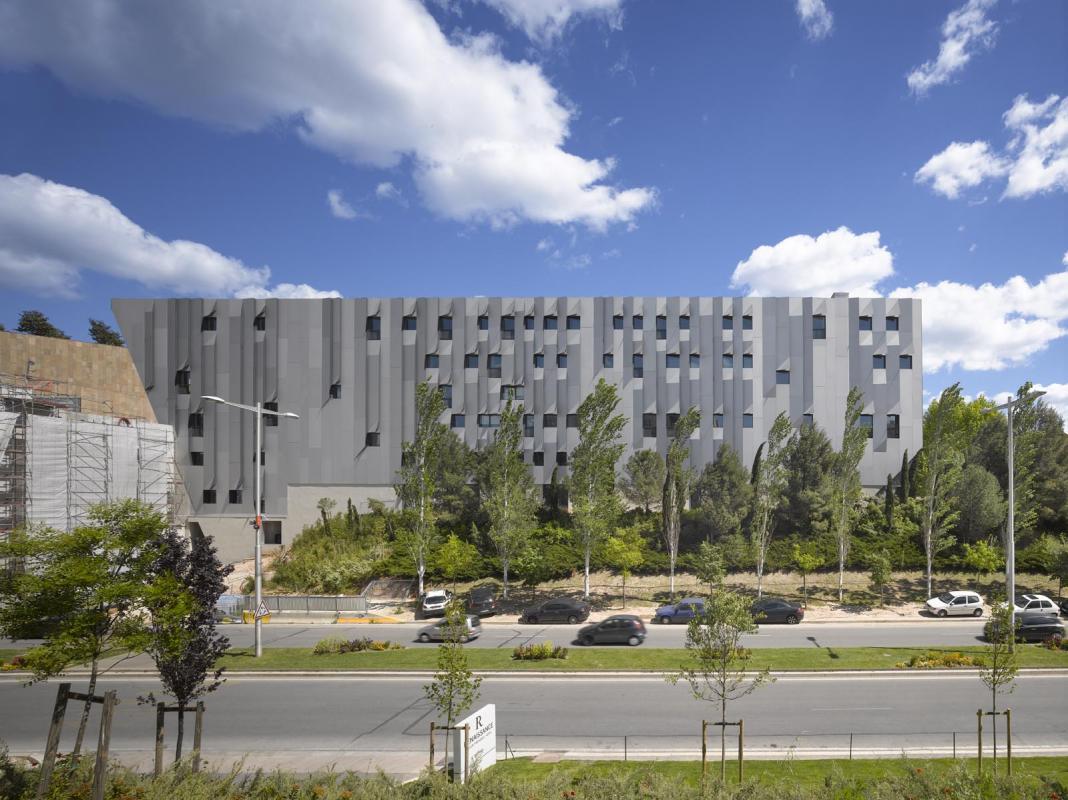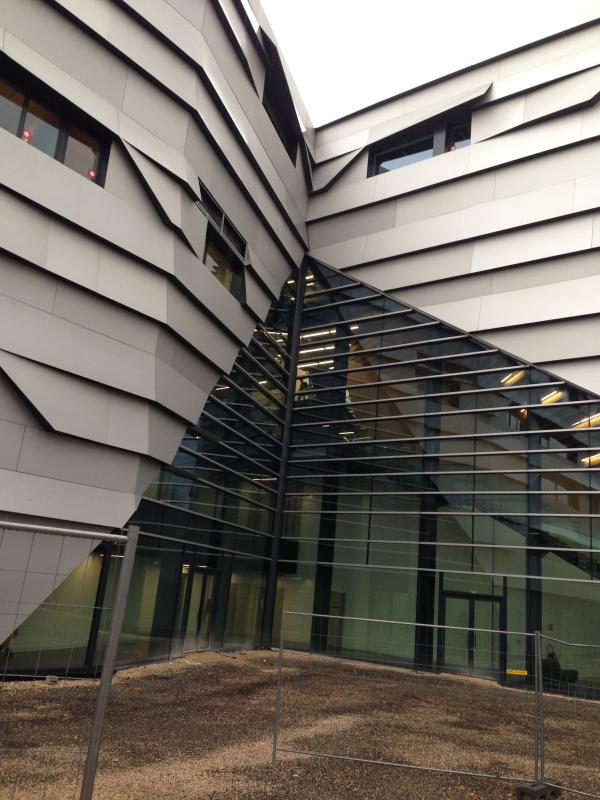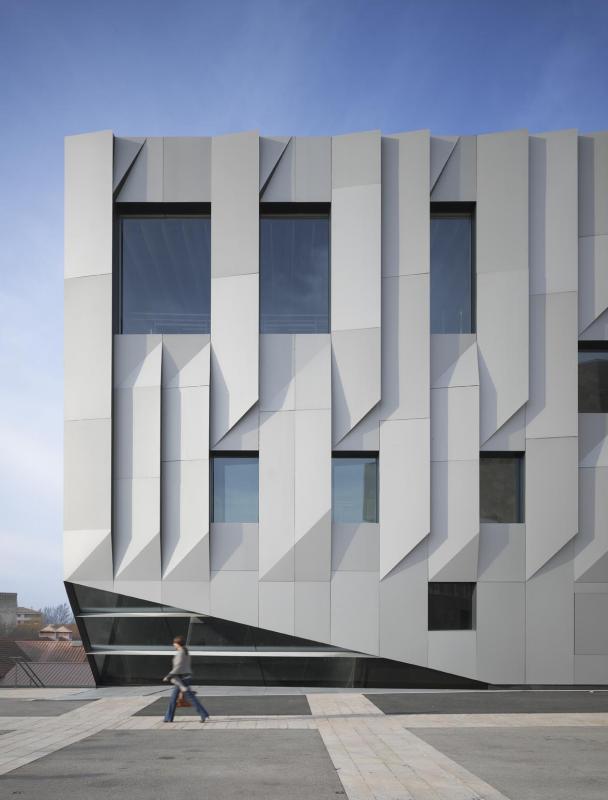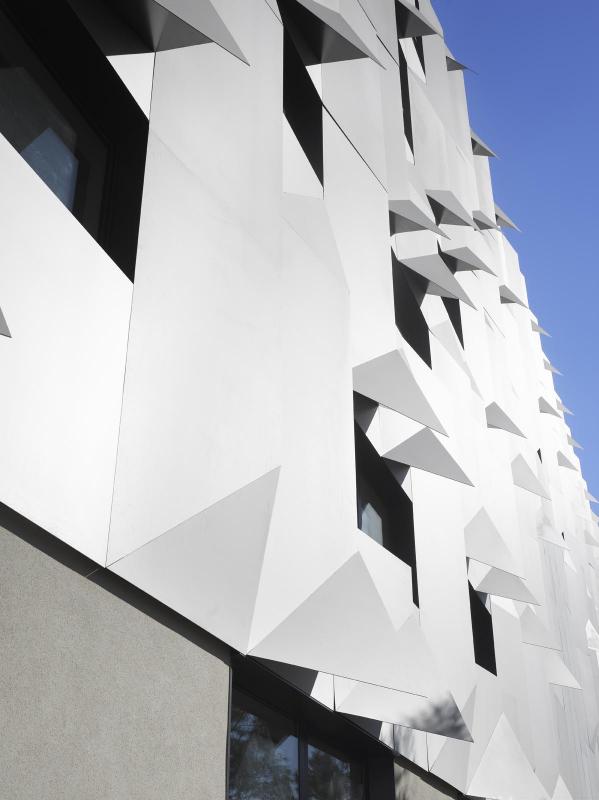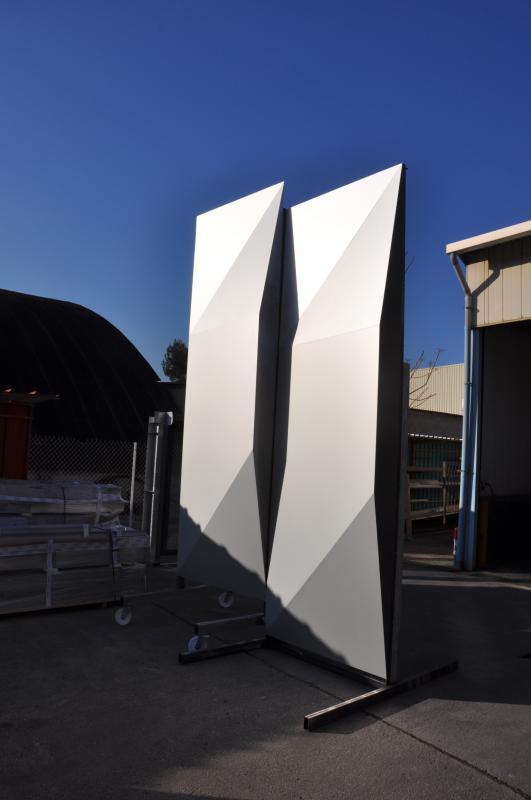Conservatoire Darius Milhaud
Construction of the new music and dance conservatory in Aix-en-Provence
The music conservatory in Aix was designed by the architects Kengo Kuma and Associates, winners of the public competition. The program includes around sixty rooms for teaching and rehearsals, four dance studios, drama rooms, and a 500-seat auditorium. The project is located in a cultural district of the city and adjoins the Pavillon Noir (performance hall) designed by Rudy Ricciotti. It consists of two wings arranged at a 90° angle: the Mozart wing, which houses the auditorium, has a steel frame structure, while the Juvénal wing is built in concrete.
The façades are clad with large anodized aluminum panels arranged in bands: they are vertical on the street side and horizontal on the courtyard side. The building's corners are sharply cut by inclined glass planes. On the courtyard side, the aluminum cladding stops at the junction between the two wings, revealing through a large glazed surface the main circulation spaces.
These cladding elements are slightly inclined outward, appearing to lift off the façade plane. This effect is inspired by the Japanese art of origami. Each inclined panel is, in fact, a three-dimensional box with a complex geometry, composed of one or more anodized aluminum faces, featuring cantilevered edges and powder-coated connecting panels that enclose the volume created by the elevation effect.
The panels are fixed using studs welded at the back with discharge welding. This method ensures uniformity of appearance after anodization and allows for quick execution in the workshop. Each panel was modeled in 3D, pre-assembled in the factory, and installed on rails in a manner similar to traditional cassette installation.
The windows of the rooms are integrated within these bands, with some featuring double frames to meet high acoustic requirements of 50dB.
The technical significance of this project lies in the management of the complex geometry of the panels. The fabrication of large panels without visible fixings required an in-depth exploration of welding systems that leave no visible marks on the exposed face of the panels (weld ghosting), a particularly challenging issue with anodized panels.

